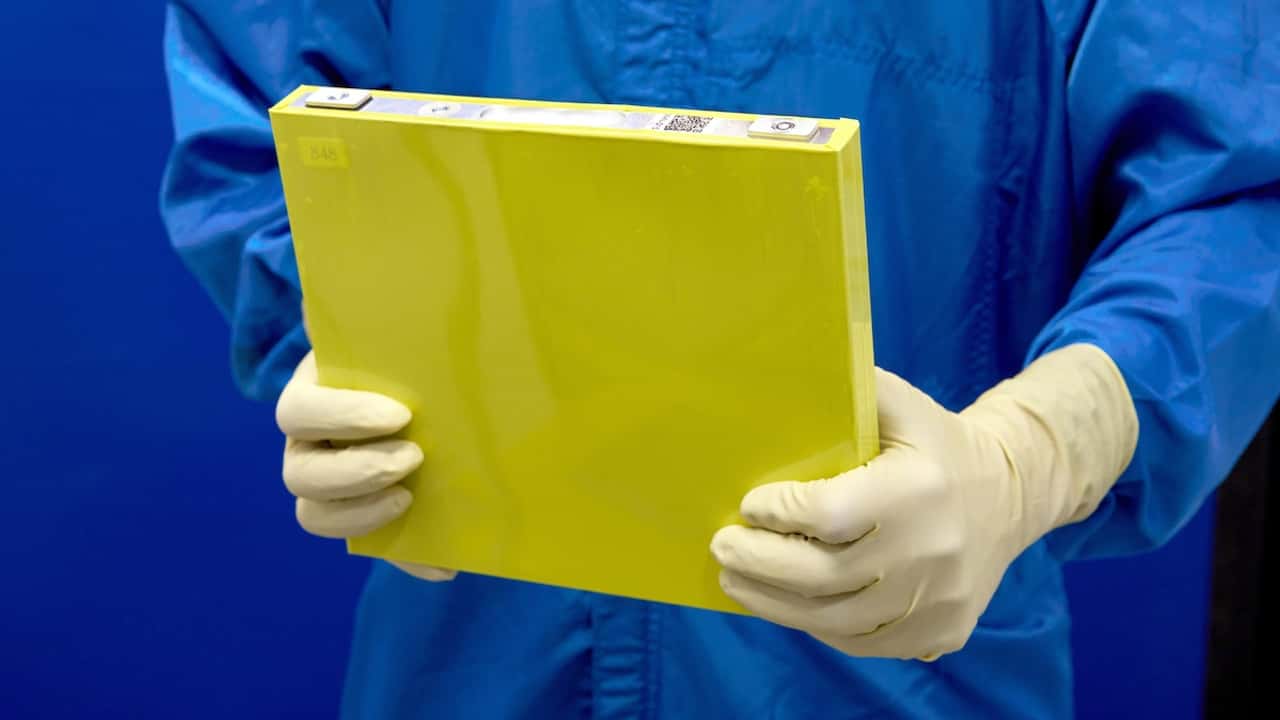LMR Batteries Could Unlock Midsize EV Trucks, GM President Says

One of the things I like most about covering the world of electric vehicles is just how quickly this technology evolves. A few months ago, I frankly had no idea what a lithium manganese rich (LMR) battery even was. Now, the president of General Motors is saying this new chemistry could unlock the midsize electric trucks that have been a gaping hole in the electric market for years.
On this week’s Plugged-In Podcast, we asked GM President Mark Reuss: Just how big a deal are these newfangled LMR batteries you’re working on? He used midsize pickups as an example.
“You don’t see any real battery-electric midsize trucks for instance, right? And so why is that?” he said. “The truck doesn’t have enough packaging space to handle the battery packs needed for the duty cycle of the truck. Because batteries that can deliver 300 or 400 miles of range are bulky, and you need a big enough vehicle to accommodate them. That’s why you don’t see an electric Chevy Colorado, Ford Ranger or Toyota Tacoma right now,” Reuss argues.
Cost is certainly a big factor here too; EV batteries are expensive, and car companies can charge more for a larger truck than a smaller one.
“So, do you sell a truck that’s deficient on the duty cycle? Probably not in that segment. Probably not a great idea,” he went on. “Do you get something that has a better energy density at a lower cost, that you don’t have to package as much battery into the truck to get the duty cycle? Now you’re talking.”
LMR batteries are a solution, Reuss said. GM says these new cells that it’s developing with LG Energy Solution will be far cheaper than the high-nickel batteries that dominate its current lineup and the U.S. EV market more broadly.
The cells contain the same ingredients as classic lithium-ion EV batteries, but in more cost-effective quantities: up to 2% cobalt, 30-40% nickel, and 60-70% manganese. The cells will be prismatic — a hard-sided rectangular box instead of a cylinder or flexible pouch — and thus easily stackable, which GM says cuts overall battery pack weight and costs.
The company claims the batteries could even cost less than lithium iron phosphate (LFP) cells, the default workhorse battery chemistry, while offering 33% better energy density. That means a cheaper battery without the typical trade-offs.
“You can take thousands of dollars out of those packs and offer people an incredible value, with a duty cycle that’s almost the same as a gasoline pickup truck,” Reuss said.
Importantly, LMR batteries, which Ford is also developing, may help unlock more budget-friendly electric cars that are disentangled from Chinese supply chains. China has a nearly complete stranglehold over the supply of LFP, so those cheaper batteries are few and far between in the U.S. (That’s one reason why Slate, the startup developing a roughly $25,000 electric pickup, isn’t using LFP. But domestic production is ramping up.)
GM plans to use LMR batteries in electric SUVs and trucks starting in 2028. It claims that those vehicles will offer a healthy 400-plus miles of range without the huge, expensive packs of the Chevy Silverado EV and GMC Hummer EV.
LMR is a step in the right direction, but Reuss thinks EV truck technology won’t stop getting better anytime soon.
“Is it a better solution today than what we’re using today? Absolutely,” he said. “Is it the answer? I don’t think so. Not yet. I think there’s more to go.”
—
Contact the author: [email protected]
Keep up with the fast-moving future of EVs and battery tech straight from your inbox. For more info, read our [Privacy Policy](#) & [Terms of Use](#).
https://insideevs.com/news/776193/lmr-batteries-gm-midsize-electric-truck/








